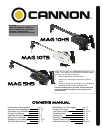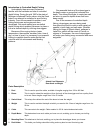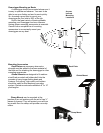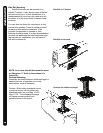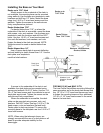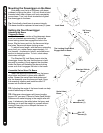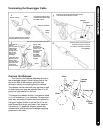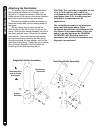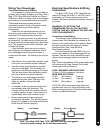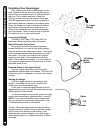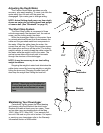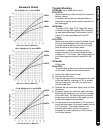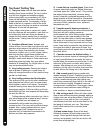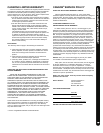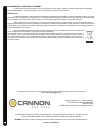
14
Ten Good Trolling Tips
1) Test your lures over the boat side before
sending them down and back. Do this to make
sure the lure wiggles and wobbles properly
without going belly up or wandering off. Some
lures can be adjusted, fine tuned actually, to
impart maximum action. For example, a slight
bend in the tail of a spoon or twist of the hook
eye in the nose of a plug can make a noticeable
difference in how the lure performs.
Also, when running two or more lures, make
sure the offerings are compatible. Lures that run
out of harmony with each other are bound to
tangle and that means wasted time to straighten
out the mess. Testing them first will avoid the
problem.
2) Consider different sizes, shapes, and
colors of lures. No one has ever figured out with
precision what makes a fish strike or snub a lure.
There is no doubt, that matching the forage
(minnows, crayfish, etc.) in color, shape, action,
and size can help trigger those strikes from
hungry fish. On the other hand, if fish such as
bluegills, small mouth bass or Coho salmon are
protecting spawning beds, they may attack
whatever is threatening. So, bright colors in lures
may out produce bland colors.
3) Vary trolling speeds. Goosing the engine
now and then or slowing to a crawl every so
often will change the action of the lures and may
get fish to strike them.
4) Vary trolling patterns and lead lengths.
The amount of line you let out often determines
how deep the lure will run and, to some extent,
what degree of action it will impart. For starters,
consider running lures about ten feet behind
downrigger weights. If flat line trolling, put them
back about fifty feet, then experiment depending
on what the fish do.
Trolling patterns affect lure action too, that is
why some anglers like to wheel a lazy S course.
On turns, outside lures will speed up
momentarily while inside lures hang for a
moment or two. Fish may nail lures that change
speeds. Also, zigzag patterns allow for more
water coverage, plus it keeps lures out of
propeller boil, an important consideration for
browns and other wary species.
5) Locate fish on a vertical plane. Place lures
in areas where fish might be. Skilled fishermen
call these areas the “strike zones”. They include
the edges of the week beds, structure along
bottom, drop-offs, preferred temperature of the
target species, and the thermocline. Remember
that fish occupy certain areas for certain reasons
(sources of food, protective cover, preferred
temperatures, etc.).
6) Consider special knots and swivels. A
good ball bearing swivel will all but eliminate line
twist and will aid in getting maximum
performance from a lure. Many anglers add the
tiny swivels to split rings already on the lure
itself. On the other hand, a swivel may dampen
the action of a sensitive lure, such as a Rapala.
Some fisherman tie tiny improved cinch or loop
knots. Loop knots in particular may enhance up
and down and side to side action of lures. Any
good fishing manual will explain how to tie these
and other knots.
7) Consider releases for flatline trolling. A
good tip is to secure a piece of downrigger cable
or heavy monofilament to the water ski hook or
handle below the transom of most boats. To the
other end of the mono or cable, add a pinch-r-
release. After letting out your lure to the desire
distance, put the rod in its holder, then bend the
tip and secure the fishing line in the release.
8) Add a weed guard. Having trouble with
weeds hanging up lures? Consider tying a three-
inch piece of monofilament a foot above the lure.
Leaves, smaller weeds and other debris may
catch here momentarily then fall off to the side of
the lure without tangling. Weedless lures are
another smart consideration. Downrigger cables
are effective weed catchers when trolling for
pike, muskies, or bass in weed-infested lakes.
9) Add a stinger hook. When fish short strike,
slap at lures without becoming hooked, adding a
stinger hook can solve the problem. Simply tie a
treble hook to one end of a four inch piece of
monofilament and then tie the extra hook to the
last gang of hooks on your lure. The stinger
hook, which trails the lure, provides extra
insurance.
10) Keep hooks sharp. Some of the best
fishermen sharpen all hooks after every fish
caught. Hooks get dull through both use and
misuse, and probably more fish are lost to dull
points than anything else.
TROLLING TIPS



